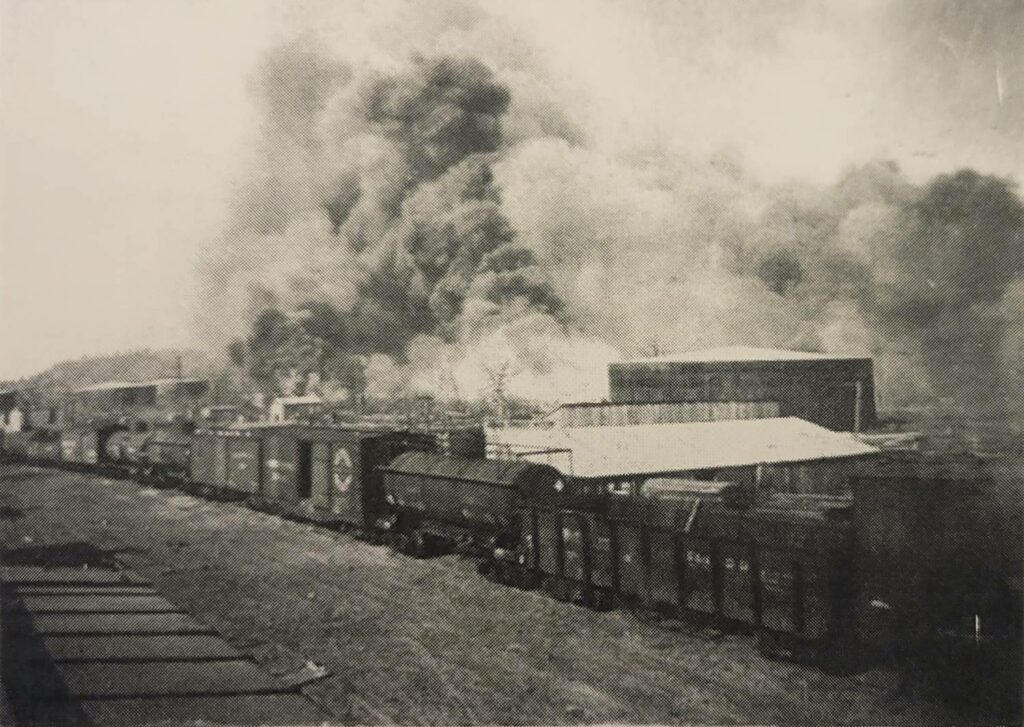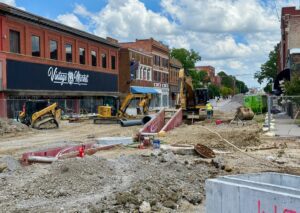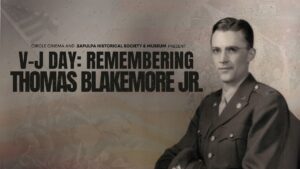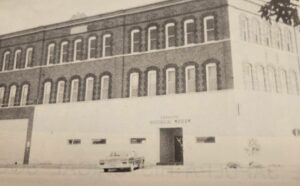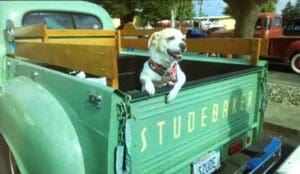Rachel Whitney, Curator,
Sapulpa Historical Museum
As the summer’s heat began beaming down on the early-day citizens of Sapulpa, the heat did not deter the people from keeping busy in the new booming town. Just months before it became the 46th state, Oklahoma was experiencing the “coolest July of the century with statewide-averaged temperature of 76.4 degrees.” With such weather, it was the townsfolk heating things up to prepare for the expansion.
A new hotel idea was presented to the people of the town. There had previously been mentions of new hotels in Sapulpa, however, “the hotel projectors have failed to deliver the goods.” In July 1906, however, “again Sapulpa is excited by the prospect of a new hotel. Heretofore Sapulpa has had propositions from different individuals that if a bonus of stipulated sum be raised, they would build a hotel here.” This time would be different.
“The proposition is being handled in a different manner this time. The plan is to get enough stock subscribed by Sapulpa people to build a three-story brick hotel, with all modern conveniences.”
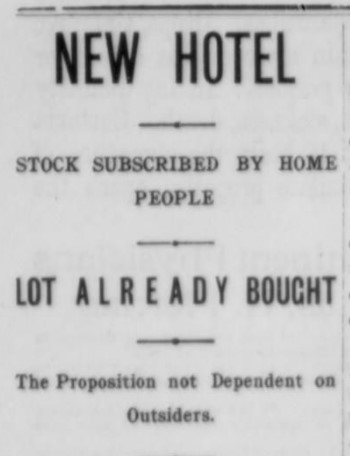
This idea seemed to work, at the time. “A lot has already been purchased for the hotel site. The subscription list was headed by the F&M Bank, which subscribed $1500. If a few more Sapulpa people will subscribe with the same liberality, the hotel is assured.” The F&M Bank, Farmers & Merchants Bank, owned and operated by Bates B. Burnett, stood on the northwest corner of Main St and Dewey Ave.
The proposed hotel’s lot would be at the northeast corner of Main St and Lee Ave, “at present occupied by Terry’s blacksmith shop. Dr. J.P. Soliss and J.E. Rice are the committee who have the raising of stock in hand. Their work was met with favorable returns.”
The hotel building would not be built for another few years. It would be known as the Berry Building, in 1911, and stood as a five-story brick building for the Sapulpa Hotel – later known as the Loraine Hotel. However, B.B. Burnett built a hotel before the construction of the Berry Building, just across the street. It, too, was a five-story brick hotel, and named in honor of Burnett’s son, William James, as the St. James Hotel, 1909.
In addition, more houses were needed to be built. Housing was an ongoing problem for Sapulpa during this time of rapid growth. There were never enough houses for new people to move into. The Frisco agent said, “there are five sets of household goods at the depot and no vacant houses for them to be moved into.”
Newcomers were sending their house items before they owned a home. However, Frisco began working to help ease the issue. Frisco was making plans for a new warehouse just for this purpose. And more was to come.
“There are nearly twenty houses under construction in Sapulpa now but more are needed.”
The Frisco Railroad had just purchased another two acres of land west of the Cotton Compress. This land was to be used for stockyard purposes. Frisco had already purchased ten acres northeast of town with the intent of using it for stockyards.
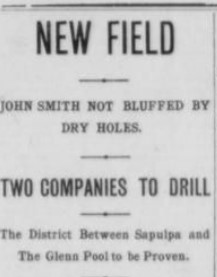
The Frisco, the housing, and hotels were booming. Other Sapulpa interests “boomed” as well. On July 6, 1906, it was announced: “Drilling will soon begin at two different points between Sapulpa and the Glenn pool, six miles southeast of Sapulpa.” More drilling near Sapulpa increased the oil mens, or wildcatters, prospects. “These wells will be watched with a great deal of interest by Sapulpa people, for if oil is found it means an unprecedented oil boom here. It will result in every quarter section between Sapulpa and the Glenn pool being drilled.”
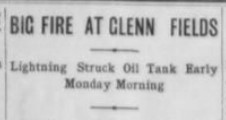
However, just a few days prior to this announcement, on July 2nd, “during a rain storm early Monday, lightning struck the large 16,000 barrel oil tank at the Glenn oil fields. Only about four feet of oil was in the tank. The ground, which is saturated with oil was ablaze all about and the various oil crews worked hard extinguishing the flames. The fire burned about four hours, but did no other damage than the burning of the big storage tank.” The area would experience many oil fires over the years.
Another business would take off in Sapulpa this week. A new cement plant was being contemplated. J.J. Marrs of the Commercial Club had been in correspondence with some Kansas company that was interested in moving to Sapulpa. The plant would be of 1,000 barrel capacity and would employ 400 men.
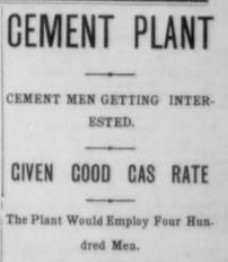
The three main items needed for a cement plant are shale, limestone, and gypsum. The shale and limestone of this area had been analyzed and had been found suitable. The gypsum could be imported as it constituted a small part of the product. Good cement was always in demand and if Sapulpa could lead off in this industry in the new state, it would go a long way in making it a big city. At the request of the prospective owners, Marrs had contacted Central Light and Fuel Company in Sapulpa and had obtained a good gas rate from them, in hope to bring the business to Sapulpa*.
*Note: The plant was never built, however.
Another kind of celebration took place on July 4, 1906, not just for America’s independence, but for America’s national pastime – baseball. “The Sapulpa baseball team played at Okmulgee. The baseball boys claim that they had a very poor ground to play on and were given some raw deals by the umpire, but still managed to come home winners by a score of 8 to 7.”
If baseball wasn’t enough entertainment, “Sapulpa has a new amusement,” as it was announced this week in Sapulpa history.
“E. C. Wallace, manager of the Lucile Opera House, has hit upon a new amusement feature that is proving to be a great thing. He has secured Messrs Spencer and Downing, roller skating experts, to locate in the city for a period of time. These gentlemen are expert skaters and teachers of the art. Fifty pairs of ball-bearing skates are available and skating is the program at the Opera House every night. Every Tuesday night is a free night, and ladies practice on Monday and Thursday afternoons. The public is taken to the ‘rink’ and big times are held every night. Go up and skate, or watch the others ‘roll about.’”
There were many attractions and businesses keeping the townsfolk busy during the 1906 summer season.
(Sapulpa Light, June 29, 1906, July 6, 1906; Monthly Climate of Oklahoma, July)

